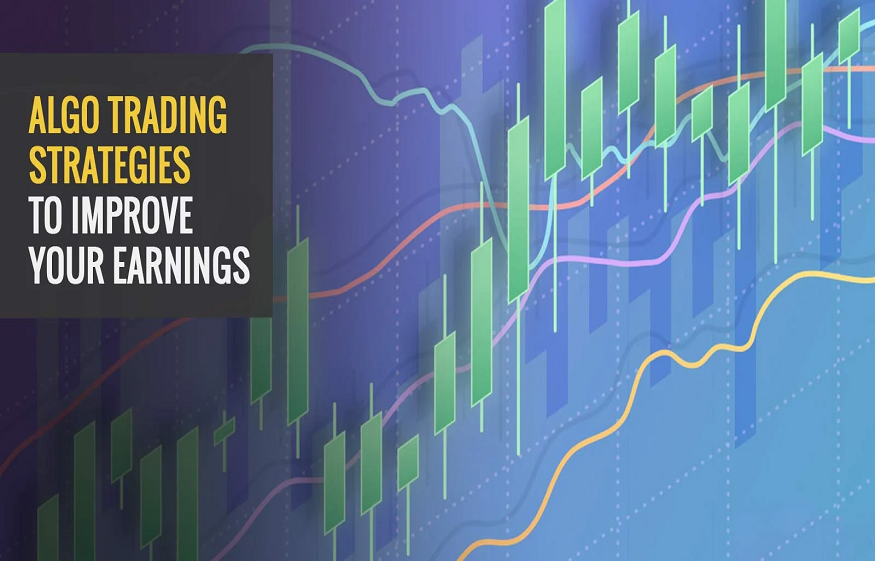In India, the idea of algorithmic trading is still relatively new. To put it simply, this kind of trading uses software to place a trade in accordance with an algorithm. A set of predefined instructions that are already included in the algo trading program make up an algorithm. So, let’s today learn about algorithmic trading that’s in vogue these days.
Advantages of Algorithmic Trading
Let’s look at a few of the main benefits of algorithmic trading.
Efficiency: Algorithmic trading minimises the time required to examine market data and implement trades by doing away with human execution. Faster order placing and lower transaction costs are the results of this.
Accuracy: Algorithmic trading eliminates the possibility of mistakes made by humans in trading choices, ensuring accurate and reliable trade execution based on preset rules and parameters.
Backtesting and Optimisation: Using historical data, algorithmic trading enables traders to assess the performance of their techniques before implementing them in real trading.
Diversification: Algorithmic trading makes it possible to execute several strategies and trades concurrently across various marketplaces, allowing traders to diversify their portfolios and lower risk.
Trading Without Emotions: compared to human traders, algorithms are not impacted by feelings like fear or greed. This can support preserving self-control and adhering to the trading strategy even under erratic market conditions.
Utilising Technology: Algorithmic trading utilises cutting-edge technology like artificial intelligence and machine learning, allowing traders to examine massive volumes of data and derive insightful conclusions that inform trading decisions.
Uses Of Algo Trading
Buy-side companies or mid to long-term investors, such as those working for pension funds, the insurance industry, mutual funds, etc., employ specially developed trading algorithms. They use the facility to buy stocks in bulk while making covertly high volume investments. This makes it possible for them to finish the task without having an impact on stock prices.
The brokerage firms, arbitrageurs, speculators, etc. are examples of sell-side participants who are often short-term traders. They gain a great deal from algo trading’s option for automated transaction execution. The use of algorithms in trading increases market liquidity, which benefits sellers.
Concepts of Market Data Analysis
The following are the key concepts of market data analytics.
Tick Data: The record of each deal executed for a certain asset, including the price, volume, and time of the trade, is referred to as tick data. For backtesting and examining trading methods, it offers a fine degree of detail.
Time and Sales: Time and sales data gives a chronological account of each deal made for a certain asset, together with the trade’s price, volume, and parties. It aids in recognizing trends and comprehending market dynamics.
Order Book: A list of all pending purchase and sell orders for a specific asset at different prices is known as an order book. Traders can learn more about the market’s supply and demand trends by examining the order book.
Technical Indicators: Based on previous price and volume data, technical indicators are mathematical computations. To guide their trading decisions, they assist traders in spotting trends, momentum, oversold positions, and other patterns.
Candlestick Charts: Within a particular time frame, candlestick charts visually depict price changes for a certain asset. They make it possible for traders to spot trends and build predictions by providing data on the opening, closing, high, and low prices.
Optimisation and Backtesting
An essential part of algorithmic trading is backtesting, which enables traders to assess the effectiveness of their trading systems using past data.
Data selection: It’s crucial to pick the right historical data for backtesting. To ensure realistic simulation, traders should take into account elements like the time duration, frequency, and quality of the data.
Strategy Implementation: A backtesting platform or piece of software must have the trading strategy carefully described and programmed. Setting admission and exit criteria, risk management thresholds, and transaction charges are all part of this.
Performance Metrics: A trading strategy’s profitability and risk are quantified by performance metrics. Return on investment (ROI), risk-adjusted return measurements (such the Sharpe ratio), the maximum drawdown, and win/loss ratios are examples of common metrics.
Conclusion
In today’s markets, algorithmic trading is growing in popularity since it ensures that all deals are done accurately and in accordance with pre-established regulations. This makes trading processing more effective, secure, and dependable.
Despite the advantages, it’s important to remember that algo trading has challenges and uncertainties. So, even with a system in place, traders may still lose money. However, there are some excellent financial services firms like Share India that are offering algo trading facilities. One can completely automate his trading, thanks to the superior algo trading mechanisms. Accurate algorithms assist you make the best trades with much ease.









